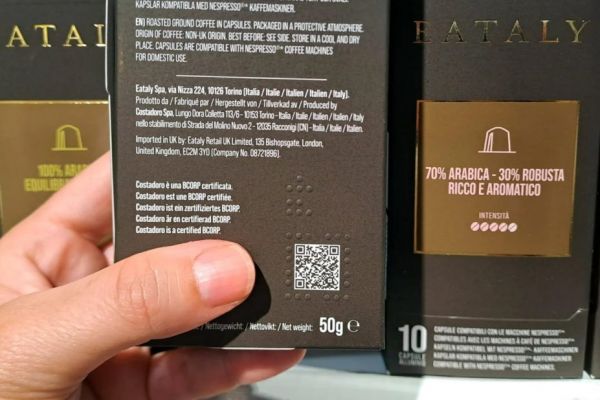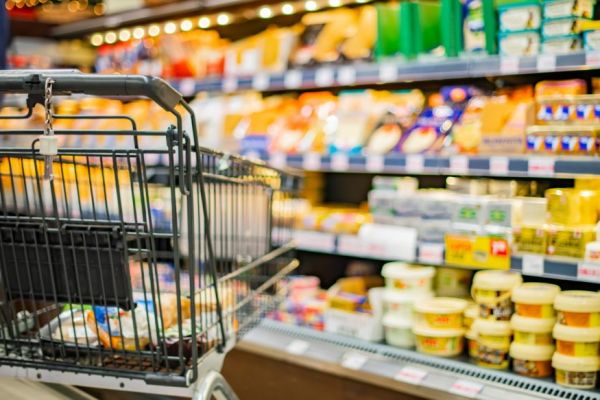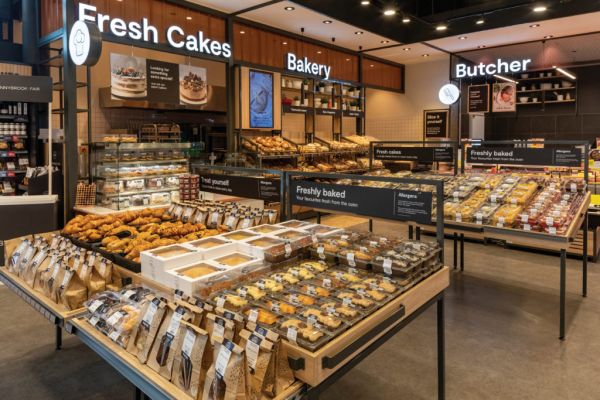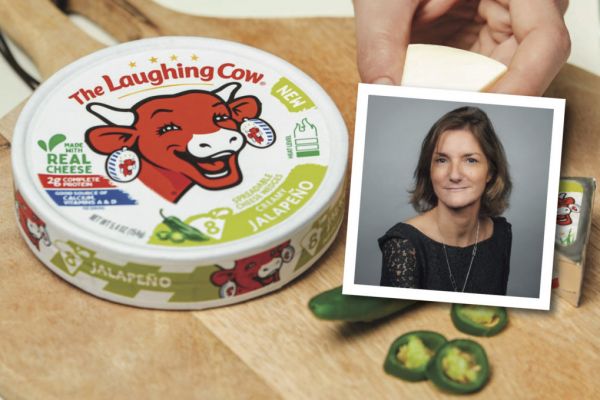A recent study from Circana has indicated that sustainability continues to be a core factor in driving purchases, despite a continued cost-of-living crisis. This article appeared in ESM’s November/December 2023 edition.
We’re now more than a year into a period of high food inflation, and while there are signs that prices may be starting to normalise, consumers are facing ‘cost-of-living fatigue’, making permanent changes to their shopping repertoire that will be hard to shift, even if inflation subsides completely.
Within this context, what role does sustainability play in terms of influencing purchasing decisions?
A recent report by Circana, Race for Resilience – Sustainability: No Plan B, examines the level to which sustainability has continued to be a demand driver, as consumers adapt to the cost-of-living crisis.
It found that, among consumers under 40 years of age, sustainability is a ‘non-negotiable’ factor, in spite of high inflation. Across all cohorts, meanwhile, 29% of consumers state that they are looking ‘more often’ for products that are good for the environment, or from a socially responsible brand. In addition, 20% state that they would spend more on ‘better for you’ products, which are often considered more sustainable.
“Sustainability has become incredibly normalised,” says Ananda Roy, senior vice-president of global thought leadership and strategic insights at Circana. “Over the last 20 years, there’s been a lot of public discourse, and retailers and brands have really invested in sustainability. You can see more evidence of sustainability in supermarkets – like reduced plastic use, cleaner ingredients, [fewer] additives, lower sugar, and recyclable packaging, particularly in Europe.”
At the same time, this increased normalisation doesn’t necessarily mean that products can command a premium just for being sustainable, Roy notes.
“You can now find sustainable products at various price points,” he says. “Moreover, European regulations related to sustainability are quite stringent. This combination of regulations and sustainability’s long presence in the market has further normalised sustainability in the eyes of consumers.”
Other consideration drivers identified by shoppers include ‘social responsibility’ – cited by 10% of European shoppers (as high as 33% in the UK and 15% in the Netherlands) – ‘better for the environment’ – also cited by 10% of European shoppers – and ‘plant based’, cited by 22% of European shoppers (with a high of 37% in Germany).
Across the Atlantic, meanwhile, sustainability has similarly become a key growth driver – some 33% of all CPG growth in the United States is driven by sustainable products, Circana’s data shows.
Addressing The Say-Do Gap
While an increasing number of consumers say that they are committed to shopping more sustainably, there is also the ‘say-do’ gap to consider – shoppers may claim that they are more eco-active, but this isn’t necessarily reflected in their purchasing behaviours. This can present a challenge for retailers and brands – if they commit to sustainability, will there be a sufficient market to support their endeavours?
“Sustainability is not ‘free’ – you have to invest, and that can take several years,” says Roy. “If a company switches to a more sustainable option, it’s not a case of just snapping your fingers – it takes two to three years, at the very minimum, to develop a sustainable product which tastes the same or works as effectively.
“A brand or a retailer needs to have the confidence that there is significant or meaningful demand for sustainable products before they start investing in them, but when they do start investing, that’s when they get economies of scale.”
Reinforcing The Message
According to Circana, packaging design and labelling can be an important touch point in terms of capturing the shopper’s attention and reinforcing sustainability as a key purchase driver. Product packaging needs to work harder to amplify brand equity through the use of relevant sustainability cues, differentiated category signals, clean-label endorsements, nutritional information, and taste and quality cues that mimic the premium-brand experience.
“Packaging is one of the best-understood aspects of sustainability, especially in the context of plastic,” says Roy. “Less understood is the volume of waste, and, of course, packaging plays a role in this. Packaging creates a physical barrier that enhances shelf life and reduces waste. Having the wrong type of packaging can negatively impact your business. For instance, in the case of packaged drinking water, making packaging ‘lighter’ made the plastic crinkly and inconvenient to carry.”
As he explains, packaging in a sustainability context serves a functional purpose, but it can also be designed to be engaging. More and more consumers are reading labels, seeking information on product composition. This, in turn, can be utilised to engage them.
“By examining packaging design, labelling, and their connection to demand, you can seize the opportunity to turn packaging into a demand driver and fulfil your sustainability aspirations,” says Roy.
Private-Label Presence
The rise of private-label penetration has also helped to reinforce sustainability sentiments among consumers, with the Race for Resilience report noting that 66% of shoppers state that private labels are ‘as sustainable’ as national brands, and 25% of private-label ‘loyalists’ believing that store brands are more sustainable than mainstream ones.
Some 56% of private-label shoppers across Europe are ‘looking for sustainable products’ when they go shopping – a higher purchase consideration than those who state that they are ‘seeking to buy a premium range’ (19%), but behind factors such as ‘having a clear budget when shopping’ (71%) and ‘actively looking for the lowest price’ (78%).
“Retailers are compelled to increase the proportion of sustainable products they offer, and one way to do that is through their own private-label offerings,” says Roy. “In terms of the new products that are coming to market, there is going to be a push on both the brand side and private-label side to have more sustainable products, mainly in the area[s] of ingredient-sourcing, traceability and packaging.”
As to whether private labels have an advantage over brands, in terms of promoting a sustainability message? “I think they have a more urgent strategic imperative, but, ultimately, everyone will need to address sustainability compliance at some point,” he explains.
Convincing The Shopper
Claims that add value are ‘worth more’ to consumers, Circana data has found, with key messages falling under four key segments: Sustainability (claims including recyclable, from recycled to biodegradable), Better for You (claims including eco, vegan, natural, protein and organic), Country of origin (claims including Fairtrade and locally sourced) and Indulgence (claims including premium, flavour, ageing and consistency).
For example, products bearing ‘eco’ or ‘organic’ positioning saw a 13.6% increase in Germany last year, in the Baby Care, Household and Personal Care categories, compared to 0.6% growth for more standard products.
Thus far, however, argues Roy, marketeers have adopted mixed messaging in terms of how they approach claims relating to sustainability, with a more targeted effort needed to associate sustainability with some of the inherent characteristics of specific categories.
“Marketeers need to consider which of the sustainability claims that exist are native to their categories,” he explains. “Let’s take frozen foods. In the discourse around reducing food waste, frozen foods have a longer shelf life and, therefore, have a role to play. Also, we keep talking about balanced nutrition, the need to eat more fruits and vegetables, and preserving nutrient value. Again, frozen foods enable you to do that, to retain that nutritional value. It’s something that’s innate to the category. You don’t have to be something you’re not.
“Whether you sell biscuits, alcoholic drinks, or crisps, your strategy and marketing teams need to start thinking about what sustainability claims you can align with. There are no easy answers, but I think it all goes back to one point: the responsibility for brands and retailers is to create a market for sustainable products with commercialisation potential. This should help them both grow the category and grow their brands, rather than merely serving as an adjunct.”
The Consumer Lens
As Circana notes, sustainability purchasing tends to be driven more by environmental than social factors.
When asked what attributes they associate with environmental sustainability, 79% of respondents to a Circana study in 2022 identified the phrase ‘renew, reduce, recycle,’ 66% cited the need to ‘conserve’ (fuel, water, energy or land), 62% cited the need to ‘reduce by-products’, and 55% identified the need to minimise their ‘carbon footprint’ or greenhouse gas emissions. Attributes associated with social sustainability, however, were cited by fewer respondents – 47% cited the need to ‘benefit society at large’, 44% identified the need to come together for the ‘greater good’, and 44% cited the need to protect ‘human rights’.
“Consumers are more aware of the impact of brands on communities,” says Roy. “Holding global brands to account for their local commitments is at a very early stage, and I expect it’ll move up, rather than stay static. That’s something you wouldn’t have seen pre-pandemic.”
In addition, younger shoppers are more likely to try new products that make sustainable claims. More than a third (35.7%) of Gen Z and millennials said that they have tried more sustainable food or beverage brands that they hadn’t purchased before, compared to 23.9% of consumers from older generations.
With regard to personal-care brands, meanwhile, the percentage of Gen Z and millennials who have tried sustainable products rises to 37.6%, whereas for older cohorts, it drops to 20.2%. In terms of household products, the percentages are 27.1% and 22.3%, respectively.
Lastly, while a third (33.2%) of Gen Z and millennials say that they have ‘not tried’ new sustainable products, this percentage rises to more than half (54.9%) among older cohorts – illustrating the level to which younger generations are continuing to push demand for sustainability in the grocery space.
“Consumers remember things,” says Roy. “There were some brands that profited during the pandemic by increasing their prices, and there were others that increased their charitable donations, gave products to food banks, and so on. So, when we enter a period of normalisation, consumers don’t forget. That’s something that can add to your equity and the esteem of your brand.”














